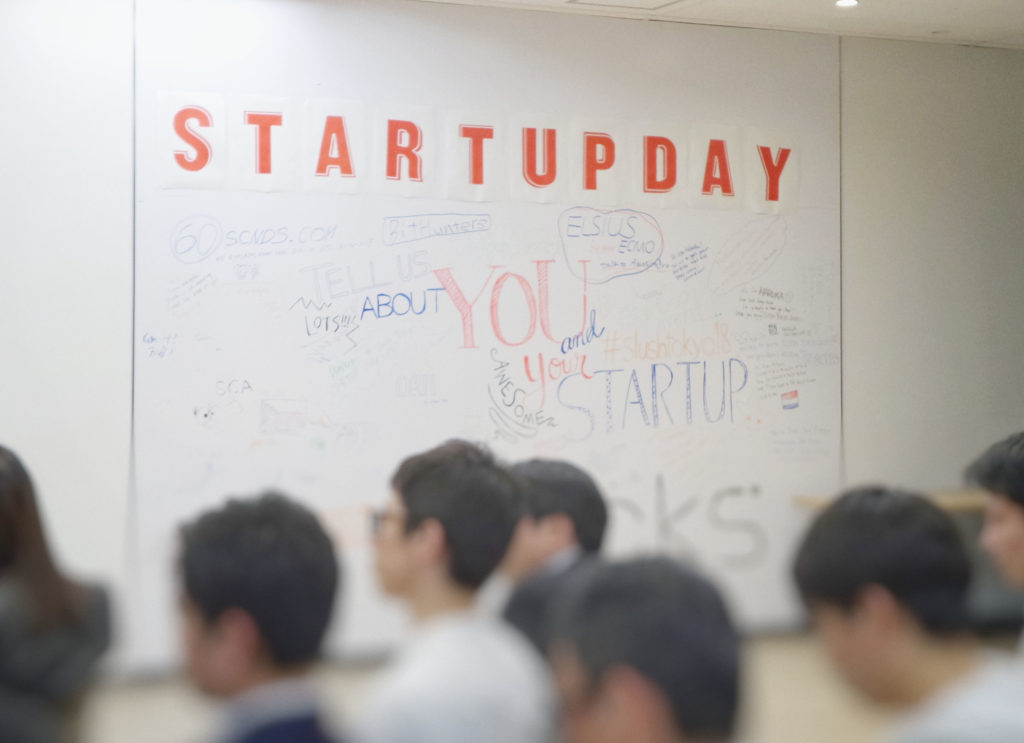The Value of University Assets to Innovation Ecosystems

When university assets and missions are leveraged well, they can build into and strengthen every other node in an innovation economy.
Universities can play an important role in priming young minds for disrupting the way we traditionally think about the innovation process. Facebook was born at Harvard. Google was born at Stanford. Although many of the highest profile startup stories feature a college drop-out metamorphosed into a successful founder, there’s more opportunity than meets the eye for universities to participate in their region’s innovation ecosystems. Large companies, investors, and startup communities all want access to and can support university students, faculty, research, alumni, and physical spaces. When university assets and missions are leveraged well, they can build into and strengthen every other node in an innovation economy. So how do a region’s entrepreneurs and business leaders access and leverage university assets to cultivate a talent pipeline, develop an environment that nurtures innovation, and create meaningful relationships that drive a local innovation ecosystem?
Recently, I collaborated with two professors-turned-entrepreneurs, Katie Trauth Taylor and Meredith Singleton of Untold Content, to explore how university missions can, in fact, align with the values of regional ecosystem leaders. From diversity and inclusion to the importance of research, we are fierce advocates for leveraging the assets universities offer in innovation ecosystem development: well-known faculty and researchers who are experts in their fields; a commitment to the mission of growing local cities and regions; and students with a passion for entrepreneurship.
INNOVATION IN TODAY’S UNIVERSITY
Historically, universities haven’t had to think like businesses. Funding flowed freely from state governments; students flocked to campuses; and the disconnect between private sector and academia, though weak, was tolerated for the pursuit of well-rounded, interdisciplinary learning. However, cuts in education funding have been made in recent years. According to the Center on Budget and Policy Priorities, states have decreased funding by $9 billion over the last ten years. Institutions have experienced significant decreases in student enrollment—a 1.5% decrease each year for the last nine years. As a result, universities have been forced to rethink how they operate as a business. How do they align degree programs with regional market opportunities? How do they lean into the relevant opportunities for research and innovation? What can collaboration with external partners look like across disciplines? And how can universities position themselves as valuable resources in an economy more enabled by technology than ever before?

While cash-strapped universities answer these emergent questions, the U.S. overall is seeing extreme growth in entrepreneurship and innovation opportunities. A recent McKinsey study shows that innovations in digital technology will have an economic impact of $14 trillion to $33 trillion by 2025. The emergence of innovation successes in fields such as biotech, information technology, manufacturing, healthcare and financial services, have caught the attention of leaders across industries. A recent Forbes article reported that 50% of millennials are aiming to launch their own businesses in the next three years. No longer are they seeking career paths dictated by university degrees. They’re clamoring for something different—a set of skills that position them to become successful entrepreneurs launching, leading, and growing profitable startups. Digital literacy, entrepreneurial mindsets, and business savvy are more important to college-aged students now than ever before.
So, with a new entrepreneurial mindset targeting and serving a new cohort of students, universities are building innovation hubs, research centers, and entrepreneurship programs. Faculty and university leaders are infusing their curriculum designs with entrepreneurial know-how. From assigning more case study readings to producing projects for actual local businesses, more and more university programs are rising to the challenge of preparing students for entrepreneurial life.
Yet, change at the university level is often slow. Ecosystem leaders can help universities participate more actively in innovation economies by proactively reaching out to engage university leaders in understanding talent needs, research questions, and commercial opportunities. And, of course, all collaboration must begin with aligning missions.

ALIGNING UNIVERSITY MISSIONS WITH ECOSYSTEM NEEDS
One such way ecosystem builders can engage university leadership is to highlight where alignment exists between academe and industry. From the jump, leaders are responsible for understanding their regional universities’ expertise. Similar to the research required for functional partnerships between regional BigCos and startups, an initial assessment of assets and interest is necessary for building university partnerships. A region’s innovation strategy should be shaped around the university’s focus areas and relationship to innovation, aligning interests in order to maximize each partner’s strengths and accelerate progress.
When business leaders can make it easy for universities to lean into values they already champion, collaboration opportunities become clearer and universities see their role in sync with the mindsets of local entrepreneurs and startups.
Interdisciplinary thinking. Supporting diversity and inclusion. Examining “why” innovations matter and how they will positively or negatively impact society. These are all areas where ecosystem needs align with university values.
Universities have long valued the strength of interdisciplinary collaboration. Bringing into conversation voices and perspectives from differing backgrounds and interests can result in new ways of thinking and envisioning a region’s future. While there are several factors that can influence a region’s ability to launch and support new startups, the most complex algorithms predicting the success of innovation economies support a focus on people—arguing that entrepreneurship increases when there are more entrepreneurial people within the region.

Each university has a different sense of self, and ecosystem builders have to keep an eye for what sparks organically between innovation initiatives and their regional universities’ focus areas. When they find that place of alignment, relationships with university leaders (i.e. presidents, provosts, and deans) go a long way—building bridges to all of the physical assets and talents housed within their walls.
The most important thing to keep in mind is that, from the university perspective, innovation must mean more than merely making money or embracing the latest buzzword. Universities are and will likely always be wary of “unexamined enthusiasm for the marketplace as a wise referee of ideas.” But that doesn’t mean they’re disinterested. It just means that ecosystem builders have to make the case for collaboration in a way that is meaningful for university stakeholders. Ideally, that means offering space for their research expertise, critical thinking, inclusive mindset, and creative problem-solving to thrive.
HOW UNIVERSITIES CAN PARTICIPATE IN INNOVATION ECOSYSTEMS
There are several ways in which ecosystem builders can leverage university assets and harness the strengths they offer: (1) becoming involved in entrepreneurship programs and curricula, (2) developing innovation hubs as opportunities for mentorship, and (3) commercializing research. Let’s dive into these three opportunities and explore case stories that bring it all to life.
ENTREPRENEURSHIP PROGRAMS AND INNOVATION-INSPIRED CURRICULA
Entrepreneurial training has steadily become an academic expectation. According to a report from the Kauffman Panel on Entrepreneurship Curriculum in Higher Education, in 1985, only about 250 university- level entrepreneurship courses were offered in the United States. Today, more than 5,000 entrepreneurship courses exist across the country.
This is a clear indicator that universities’ have begun to shift their focus toward innovation—starting with their students. Mary Grove from the Rise of the Rest Fund speaks to this shift with enthusiasm: “There’s so much momentum and excitement around entrepreneurship, startups and small businesses as the back-bone of job creation in the U.S. Universities certainly play a very fundamental role in that.”
It takes more than capital to create a company; talent and passion are central to an innovator’s success. And universities can provide talented students and passionate researchers that can support revolutionary ventures. In this important way, universities can cultivate the talent pipeline for startup communities. Universities can also provide support through institutes, competitions, administrative services, and student groups. Recent research found that such efforts can challenge academic cultures that tend to be more risk averse—changing mindsets around innovation.
What’s more: Entrepreneurship programs can prevent “brain drain”—or the tendency of residents to leave the region after college. More leaders are arguing that the creativity and business savvy that comes along with entrepreneurial training can compel students to stay in the region and positively impact local communities. It’s not only about achieving world domination through the creation of venture-backed unicorns. It’s also about growing and developing an entrepreneurial culture that can result in immediate benefits and long-term commitments to local economies.

MIAMI UNIVERSITY’S JOHN W. ALTMAN INSTITUTE FOR ENTREPRENEURSHIP
Dr. Tim Holcomb is fostering the kind of skill-building today’s entrepreneurial students are looking for at Miami University. Before joining Miami as an associate professor of entrepreneurship, he spent 13 years at Accenture, founded four venture-backed startups, and led the $800 million Network Services Division of Flex. Now Director of the John W. Altman Institute for Entrepreneurship at Miami University, where their mission is to prepare tomorrow’s entrepreneurial workforce to be “Job Ready, Day One,” he is making efforts to elevate students’ impact on society.

When describing Miami’s differentiated approach to undergraduate entrepreneurship education, Tim talks about their focus on, “Teaching students to ‘do’ entrepreneurship, rather than teaching students ‘about’ entrepreneurship.” Faculty take this “do” mentality seriously by delivering programs that connect with other nodes in the ecosystem. For example, students and faculty alike engage with key regional organizations like Cintrifuse, Flywheel Social Enterprise Hub, and CincyTech. Annually, students and student-led startups receive mentoring, coaching, and advice from more than 450 angel investors and venture capitalists, accelerator directors, startup founders, social entrepreneurs and others from organizations like Techstars, 500 Startups, and Silicon Valley Bank. From students pursuing initial funding from angel investors to professionals offering guest lectures, Miami’s institute focuses on ways to engage students with other nodes of the ecosystem necessary to fostering entrepreneurship in the region.
As a result of Miami’s innovative, award-winning programming, many students have taken insights from seasoned entrepreneurs, BigCo leadership, and investors to develop their own ideas and grow them into trail-blazing companies. Collectively, Miami student-led companies have raised more than $12 million in venture funding over the past four years. One student-led company, OROS, raised a $2 million seed round led by NCT Ventures with Fengshion Capital in 2016. As a performance outerwear company that designs, develops, integrates, and markets a line of extreme outerwear, they use what’s considered the “best insulation on the planet,” the NASA-inspired and patented Aerogel-based SolarCore technology. Three years after the company’s launch, OROS has generated $10+M from sales of its gear in more than 100 countries worldwide, and its proprietary insulative technology, SolarCore, can be found in highly regarded brand products, such as L.L. Bean’s boots, Cabela’s boots, and John Deere gloves. Cofounders Michael Markesbery and Rithvik Venna were even named to the 2018 edition of the Forbes 30 Under 30 list of top disruptive entrepreneurs in the U.S. in retail and e-commerce. Investing in university programming is just one way to forge connections between university assets and other nodes in an ecosystem.

HOW DOES SUCH A PROGRAM IMPACT THE REGION’S STARTUP ECONOMY?
STARTUPS:
149 student-founders launched 36 startups and high growth companies as part of the RedHawk Launch Accelerator and the Technology Commercialization and Startup Launch courses. Three of the student-led startups raised initial funding and/or landed spots in startup accelerators (Cydekick, Akinda Co., and KCD Cosmetics).
MENTORSHIPS:
498 Miami alumni and professionals from entrepreneurial ecosystems across the nation mentored students/student- led startups and/or guest lectured in entrepreneurship courses.
INVESTORS:
128 angel investors, VCs, accelerator directors, and ecosystem builders from 12 states across the U.S. participated in RedHawk Venture Pitch Competitions held at the end of the Fall and Spring semesters, including California, Florida, Illinois, Indiana, Kentucky, Michigan, New York, North Carolina, Ohio, Texas, Virginia, and Washington D.C.
INNOVATION HUBS AS OPPORTUNITIES FOR MENTORSHIP
Also called makerspaces, innovation hubs are physical locations dedicated to fostering innovative thinking and focused research. They can not only leverage a university’s capital assets, they can provide opportunities to incubate ideas, connect researchers with industry, and create mentorships between participants and university or industry leaders.
According to the IMPACT Index—a comprehensive survey of 248 senior managers of entrepreneurship centers—over 1⁄4 of all innovation hubs in the U.S. are university-affiliated. Their reasons to exist align with both university and regional economic values: to grow local entrepreneurial culture (71%); create jobs (63%); encourage women and minority entrepreneurship (38%); and commercialize university research (23%). Universities can serve as innovation drivers by transferring technology to the local industry and stimulating the development of new businesses.
THE UNIVERSITY OF CINCINNATI’S 1819 INNOVATION HUB
At the University of Cincinnati 1819 Innovation Hub, it’s exactly that—a place “where industry meets university.” Institutions and bureaucracies can often create barriers to highest currency: ideas. So instead, students, faculty, and professionals all use the space to bring an idea to the table and use interdisciplinary action to explore growth opportunities. UC’s very first innovation officer and leader of the space, David Adams, says 1819 is “helping faculty and students bring their ideas to life and to market.”
As a result of universities previously operating independently of industry, there was often a disconnect between research taking place inside the institution and a need for innovation research in business. Innovation hubs help innovators connect more easily with researchers, shortening the time to prototype or market. With an interdisciplinary approach, they connect sometimes disconnected disciplines such as healthcare to engineering to technology.
The 1819 Innovation Hub also creates an opportunity for faculty
and program directors to connect with business leaders, giving them insights into the employees and skills businesses need in today’s workforce. Physical spaces that bring multiple partners into collaboration create an environment that fosters creative thinking and encourages interdisciplinary approaches to solving problems. Universities are able to understand changes in industry trends and emergent needs; innovators can connect with researchers in a variety of disciplines; and industry leaders can tap into the skillsets of students and graduates, identifying talent and valuable product innovations.
COMMERCIALIZING ACADEMIC RESEARCH
Another approach is a laser-focus on commercialization strategy. Through programs such as on-campus incubators or near-campus research parks, the commercialization of academic research can positively impact regional economies. Clearly stated, if a local government sees a university’s research budget is large, they expect a certain percent of that research to be commercialized. Universities invested in innovation typically develop tech transfer offices where entrepreneurs, or equity owners of an invention, work together to harness discoveries that can bring revenue back to a university. These commercialization strategies have looked like university professors teaming up with entrepreneurs to build business ideas or university research discoveries getting licensed by large companies like Samsung or Humana.
Uniquely, for instance, the Commonwealth of Kentucky is reshaping the way they foster innovation growth that leverages universities in commercializing research. C3, the Commonwealth Commercialization Center, a science and technology nonprofit, serves as a statewide liaison to create partnerships with Kentucky’s public universities and colleges. C3 ensures universities and colleges of all sizes and in all regions of the state have the opportunity to engage in the innovation ecosystem. The key differentiator of C3 is its financial independence and use of state funds to support Kentucky startups and scaleups. C3 provides a continuum of support and capital for growing companies. From SBIR matching grants and direct investments from the Kentucky Enterprise Fund, C3 ensures that ideas and intellectual property transition into products and businesses. In addition to its financial commitment to innovation growth, C3 also offers legal, accelerator, and small business consulting. C3 is a unique, emergent force for the cross- regional commercialization of academic research. Read our case story below to learn how other organizations like University of Louisville’s LEAP are leveraging university and innovation ecosystem assets to promote economic vibrancy.
UNIVERSITY OF LOUISVILLE’S LOUISVILLE ENTREPRENEURSHIP ACCELERATION PARTNERSHIP (LEAP)
For the University of Louisville (UofL), a premier research university producing new technology innovations and talent, commercialization strategy directly involves local public-private partnership, Louisville Entrepreneurship Acceleration Partnership (LEAP). With the support of leaders at the Kentucky Cabinet for Economic Development, LEAP was founded with the goal to “build a sustainable innovation economy that will grow, attract, and retain innovative companies, including high- quality startups, by leveraging university innovations and talent, BigCo participation, and venture capital relationships.”

William Metcalf, UofL’s Executive Director of Research Development and Strategic Initiatives, explains how LEAP is focused on “driving a tech- based economy for the region, where each contributor in the system wins. BigCos get access to innovations and talent while entrepreneurs gain BigCo customers. Investors gain access to innovative technologies and build meaningful relationships with talent. For UofL, LEAP provides access into an entrepreneurial network that improves our ability to move inventions out of the university lab and into the market.”
UofL’s entrepreneur-in-residence (EIR) program provides resources to help founders translate discoveries into commercially relevant products and services by acting as a bridge to the entrepreneurial community. EIRs imbue universities with fresh thinking on how to build businesses and access networks of founder and funder talent. In short, EIRs have the opportunity to build back into their communities by helping students and faculty develop business cases for academic discoveries.
“A research university offers a wealth of proven solutions that are ready for market validation. In other words, entrepreneurs should be aware of the opportunities that are sitting on the end of this particular springboard, waiting for someone to launch. Founders would be surprised how willing universities are to work with entrepreneurs to turn research into a startup. Couple that with the expertise the researchers bring with them in their particular field, and a startup is already on first base in terms of knowing the problem and general solution. And one more thing: money! When you build a business through a university there’s potential access to SBIR grants which can fund development of the operation.”
– CHARLEY MILLER, CEO OF UNITONOMY
One of UofL’s current Entrepreneurs in Residence (EIR), Charley Miller, is Founder and CEO of Unitonomy, a startup committed to helping companies improve the efficiency of their internal communications. Miller is using this opportunity to identify ways to use university assets to empower entrepreneurs. With exposure to ecosystems on both coasts and a background in tech, he’s been relishing the opportunity to mentor others on a regular basis as a specific and meaningful way to impact the innovation economy on an individual level. Similar to his fellow EIRs, he offers his experience, business mindset, and professional network to problem solve in new ways and open doors across disciplines and activities. In a recent conversation, he offered his recommendations to those who want to leverage university assets.
In fact, he recently developed the Founder Hunt as a way to get the word out about these opportunities to leverage university assets. This event hosted 180 healthcare entrepreneurs and innovators from 6 different states to inspect the opportunities coming out of the University of Louisville as well as other regional research universities.
SPARKING A REGIONAL CULTURE OF INNOVATION
Universities are nearly always at the heart of innovation corridors.
From academic medical centers spawning biotech startups in Boston to Carnegie Mellon’s robotics program catalyzing Pittsburgh’s innovation district, there’s no debate that economic vibrancy is made possible through willful participation of universities in the innovation economy.
When ecosystem leaders engage universities in innovation by aligning academic expertise and strategic priorities with the region’s long-term goals, they can network what were once disconnected nodes in the ecosystem.
Such a commitment creates an environment for local communities to begin distinguishing themselves as innovation corridors, creating additional revenue and job opportunities, and developing a rallying cry around which innovators can unite.
